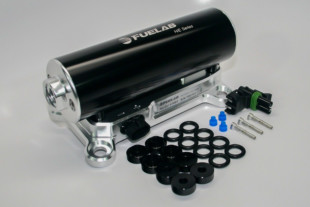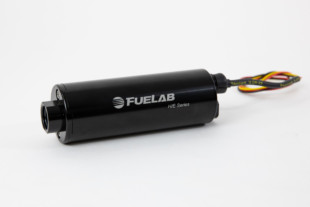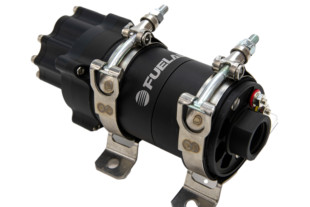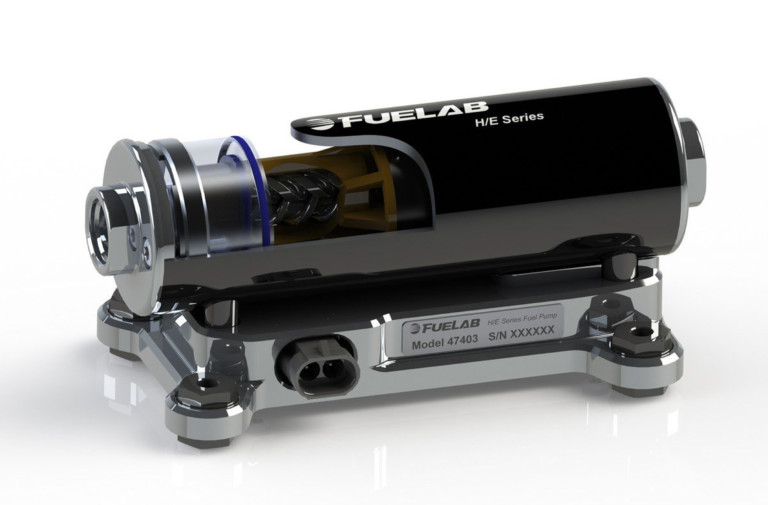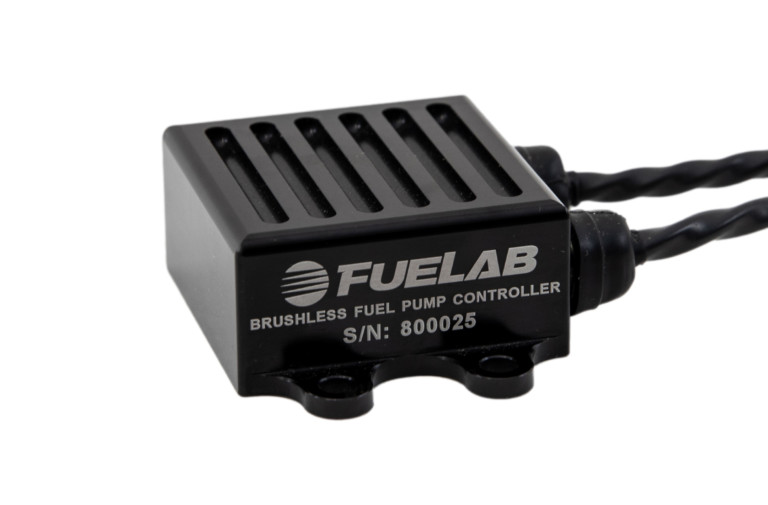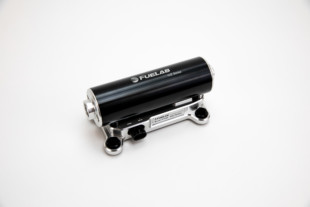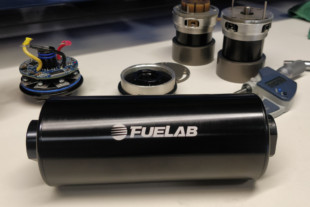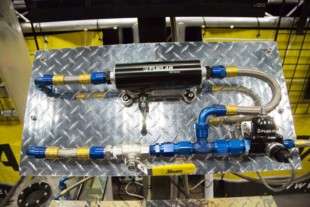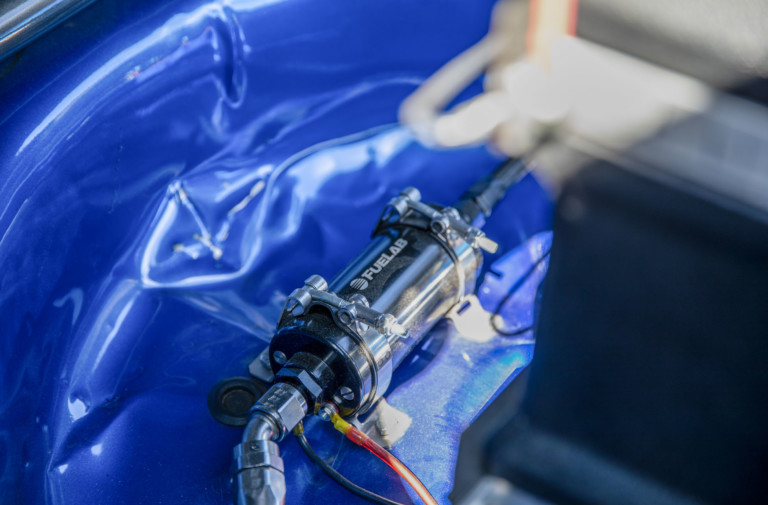Understanding How Brushless Fuel Pumps Work
The fuel system of a racecar is the gatekeeper to how much power it can make. Careful thought needs to go into each part of the fuel system and the fuel pump is the star of the show. Brushless fuel pumps are a great way to build a strong fuel system since they’re super-efficient and are sized to fit in the tightest of spaces around a vehicle.
Each fuel system is going to be different since every application they’re used in will have its own requirements. An EFI or carbureted engine can benefit from a brushless fuel pump providing its go-go juice, but a lot of people might not understand what these pumps bring to the table. So we sat down to chat with Rob Scharfenberg from Fuelab to learn more about brushless fuel pumps and the advantages they provide.
Brushless fuel pumps come in a variety of sizes and configurations — this makes them a very versatile fuel pump that can be used in different applications based on fuel demand and mounting space.
Brushless Fuel Pump Basics
Brushed motors operate in an entirely different way than a brushless motor, so it’s important to understand how a brushed motor works to see the difference.
A brushed electrical motor has brushes that keep the motor turning through the process of changing the direction electricity flows through the wire windings of the motor. The magnetic force that’s created by this process is what propels the electric motor. The brushes are interacting with the commutator on the motor and this is what allows the electricity to change directions.
Brushless motors use a totally different structure than a brushed electric motor, and Scharfenberg explains in what ways this is the case.
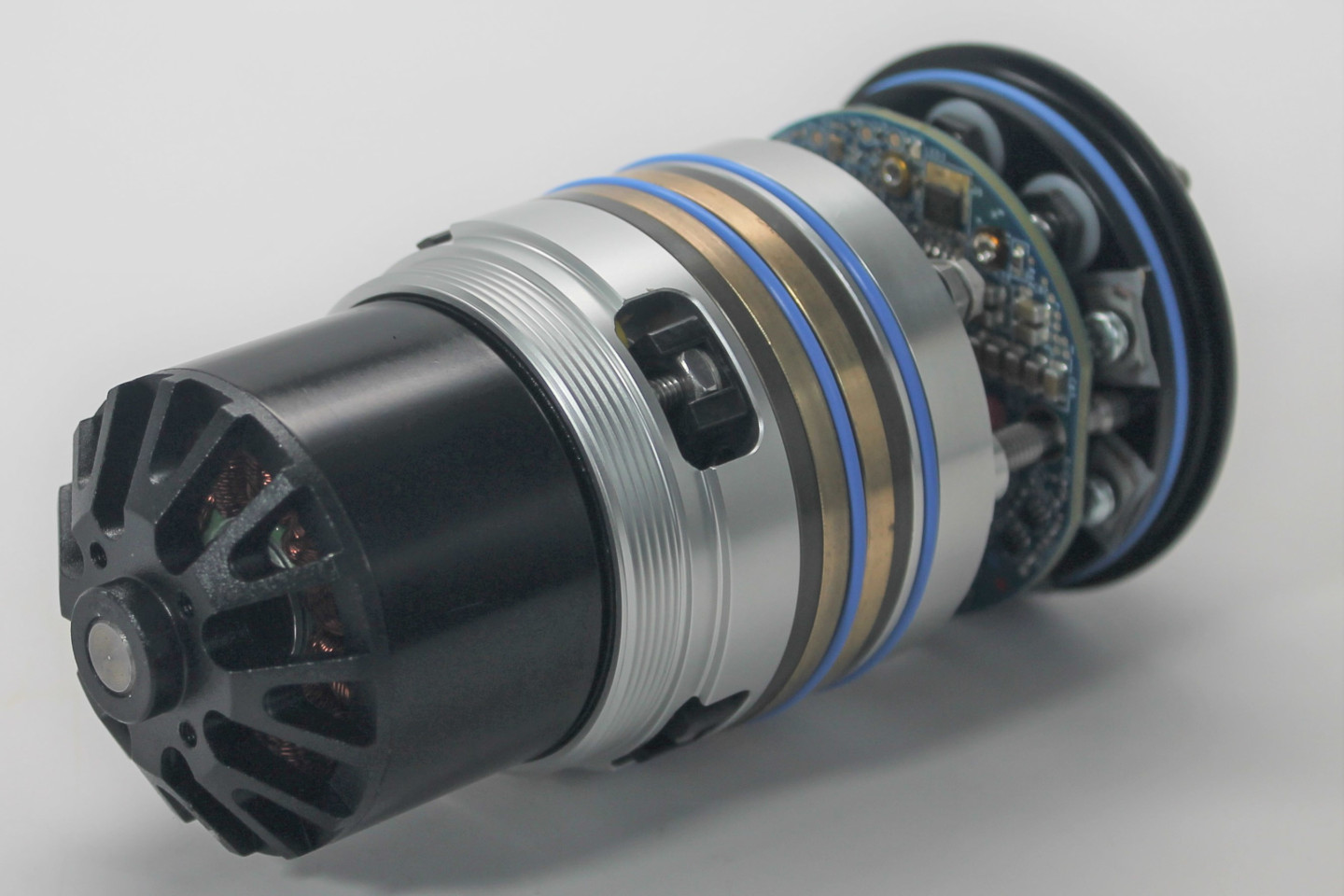
The brushless fuel pump has a totally different structure and design than a typical brushed fuel pump. These pumps are more efficient and have a smaller footprint.
“A brushless motor has more of a ‘flipped’ structure compared to conventional DC Brushed motors, wherein the magnets rotate with the windings being stationary. Electronics are required to commutate or change electrical flow within the windings to allow the motor to rotate. The electronics used for such assembly can be advanced enough to allow variable speed to occur upon signal input from the outside world.”
The electronics required by a brushless fuel pump are different from what a brushed fuel pump needs, as well. The brushless fuel pump’s electronics might also require a special mounting location based on the application.
“The electronics controls what current goes into the different motor windings in the brushless motor. The electronics need to be there to control the entire system. These electronics are what go in between the power going into the motor and the motor phase wiring. Typically, you’ll see the external controller when you want to keep the electronics on the outside of the fuel tank,” Scharfenberg says.
Having a greater efficiency has the biggest benefit, it allows for a lower current draw and less heat to be added into the fuel system itself. – Rob Scharfenberg, Fuelab
The most important part of the electronics required to run a brushless fuel pump is a speed controller feature. A speed controller is the brains of the pump and it controls how fast the pump needs to spin; as the engine requires more fuel, the pump can be commanded to move faster, to flow the required amount of fuel by the ECU or other means. This technology is part of the reason a brushless fuel pump is so efficient: it makes sure the pump is running wide open constantly.
A brushless fuel pump doesn’t use any type of radical flow system to move fuel — these pumps actually take on all the same forms of a brushed fuel pump. This means you don’t have to worry about how the pump will move fuel since it’s available in a screw-style pump, a positive displacement-style pump, and even a turbine-style pump.
The electronics used to control a brushless fuel pump are more advanced than a typical brushed fuel pump. These pumps are capable of flowing more fuel while using less current thanks to their electronics.
The Advantages Of A Brushless Fuel Pump
Now that you know a little bit about brushless fuel pump basics, the question needs to be asked, why should you think about getting one? The brushed electric motor has been around for a very long time and its abilities have certain limits — that’s where the brushless fuel pump can help.
A fuel pump with a brushless motor is going to have several distinct advantages over a fuel pump with a brushed motor. The biggest of these is how efficiency. We talked about earlier how the electronics allow a brushless fuel pump to match the pace of the engine in fuel delivery, and that makes it highly efficient.
One of the advantages of a brushless pump is we can get a lot of power out of a system and reduce the size of the packaging. -Rob Scharfenberg, Fuelab
“Having a greater efficiency has the biggest benefit — it allows for a lower current draw and less heat to be added into the fuel system itself. More power being transmitted to a fuel pump will turn into heat, and since a brushless fuel pump requires less power by being more efficient, it will generate less heat. The brushless fuel pump’s efficiency also makes it less taxing on the electrical system of the car,” Scharfenberg explains.
Brushless fuel pumps can be used with nearly any type of fuel.
Fuel pumps with brushed motors draw a lot of current and that means they’re going to generate a lot of heat as they run. A brushless pump is going to reduce the load on your vehicle’s electrical system and this also means the pump won’t be getting nearly as hot. A pump that doesn’t get hot thanks to less current draw has a unique benefit — it’s not going to transfer nearly as much heat into your fuel as your vehicle runs for extended periods of time.
“The lower the amount of current draw, the less heat that goes into the system,” Scharfenberg states. “It helps with the overall reliability of your fuel system because if your fuel gets too hot, it becomes prone to cavitation…a vapor lock type of condition. If your fuel is exposed to additional heat, it can lead to a loss in fuel pressure and a host of other issues.”
Fuel compatibility is also a huge advantage for brushless over brushed fuel pumps. A brushless fuel pump will work with gasoline, E85, methanol, and even diesel. The fuel actually flows through the pump and electric motor itself in a brushless fuel pump — this is done to help cool the pump and make it easier to seal up.
“A brushless system doesn’t require you to worry about the commutator and how it reacts with the fuel as you do with a brushed motor, Scharfenberg explains. “Mechanical brushes that are exposed to fuel are going to cause compatibility issues. Fuel like E85 can be corrosive and the lubricity can be low…that’s hard on parts inside a brushed motor. With a brushless system, there is no wear since there’s nothing moving other than the shaft itself.”
Since brushless fuel pumps are smaller, they can be mounted in tight spaces. This makes plumbing a fuel system much easier and gives the end-user more options.
Racers need fuel pumps that can move a tremendous amount of fuel quickly, but they also don’t want a giant fuel pump that adds a lot of weight or is hard to mount. The brushless fuel pump has both of these attributes thanks to their technology.
“One of the primary advantages of a brushless pump is we can get a lot of power out of a system and reduce the size of the packaging. Most brushed fuel pumps use a ceramic-based magnet that has a low flex density. A brushless system uses a neodymium magnet system that’s much stronger and has a higher performance level. For high-horsepower applications, it really becomes more significant since you need a bigger fuel pump, Scharfenberg says.
Brushless fuel pumps provide a lot from a performance standpoint that makes them a great fit for high-performance applications. These pumps are vastly more efficient than a standard pump that uses a brushed electrical motor, they won’t add additional heat to your fuel, and they don’t take up a lot of real estate thanks to their compact size. If you’re thinking about upgrading your fuel system, making the switch to a brushless fuel pump is worth examining if you want some extra performance and reliability.


